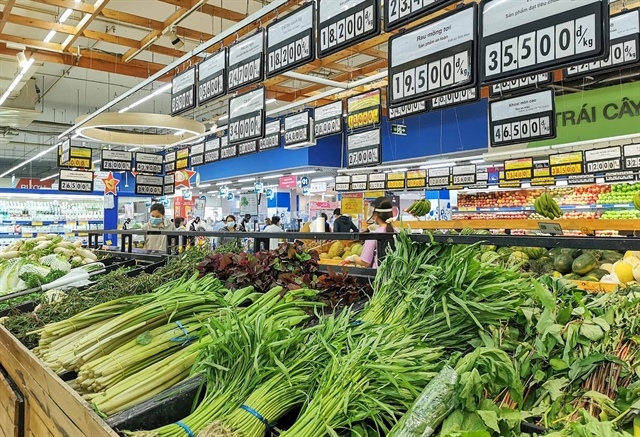Vietnam's GDP growth expands by 3.32% in Q1
Vietnam's GDP growth expands by 3.32% in Q1
Vietnam's economic growth continues to be affected by the challenging global economic environment.
Vietnam's GDP growth is estimated to expand by 3.32% year-on-year in the first quarter of 2023, the second lowest economic expansion rate during the 2011-2023 period.

Dinh Vu Port, Haiphong. Photo: Chien Cong/The Hanoi Times |
Director of the General Statistics Office Nguyen Thi Huong announced the figure at a press conference today [March 29].
According to Huong, Vietnam's economic performance in 1Q2023 was affected by ongoing complex and volatile changes in the global economy, including persistently high global inflation, slow recovery, and reduced consumption demand from major trading partners.
"Of particular concern was the instability of some banks in the U.S. and Europe, which negatively impacted market confidence in the banking system. In addition, central banks continued to raise interest rates and tighten monetary policies, further complicating the global economic situation," Huong said.
While various international organizations have different opinions on global economic growth in 2023, they all agreed that the growth rate will be 0.5-1.2 percentage points lower than in 2022.
Recently, the World Bank (WB) and the United Nations Department of Economic and Social Affairs (UNDESA) released reports with more pessimistic forecasts for global economic growth in 2023. The WB predicted that global growth would only reach 1.7%, which is 1.3 percentage points lower than the June 2022 forecast. Similarly, UNDESA suggested that global economic growth would be 1.9%, which is 1.2 percentage points lower than the June 2022 forecast. "This shows the challenging global environment that will affect Vietnam's economic growth," Huong said.
The GSO estimated that GDP grew a modest 3.32% in the first quarter of 2023. The industrial and construction sectors were particularly affected, with production in some key industries declining due to high input costs and a sharp drop in the number of orders.
The industry's value added fell by 0.82% year-on-year, the steepest decline in the 2011-2023 period, and reduced the overall value added of the economy by 0.28 percentage points.
"This was mainly due to declines in the growth rate of the processing and manufacturing sector (-0.37%), mining (-5.6%), and electricity generation and distribution (-0.32%). Meanwhile, the construction industry grew by 1.95%, which was only higher than the growth rates of 0.28% and 1.41% in the corresponding periods of 2011 and 2012, and contributed only 0.12 percentage points to the overall growth," the statistics agency noted.
Meanwhile, the service sector showed signs of recovery with a growth rate of 6.79%, contributing 95.91 percentage points to growth, thanks to the effectiveness of domestic consumption stimulus policies, the policy of opening up the economy, and activities to promote and support Vietnam's tourism.
Some service industries made significant contributions to the increase in total value added in the first quarter of 2023, such as accommodation and food services, wholesale and retail trade, finance, banking, and insurance, transportation and storage, and information and communication.
Meanwhile, the agro-forestry-fishery sector expanded by 2.52% or 8.85 percentage points to the overall growth.
In the first quarter, there was a decrease in both import and export activities, resulting in Vietnam's total import-export turnover of goods of US$154.27, down 13.3% compared to the same period last year. Of this, exports decreased by 11.9% to US$79.17 billion, while imports decreased by 14.7% to US$75.1 billion. However, Vietnam still maintained a trade surplus of $4.07 billion in goods during the quarter.


























